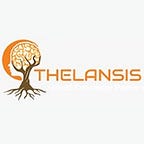Open-Angle Glaucoma (OAG) — Market Outlook, Epidemiology, Competitive Landscape, and Market Forecast Report — 2023 To 2033
Open-angle glaucoma is a progressive optic neuropathy characterized by the acquired loss of retinal ganglion cells and atrophy of the optic nerve. It constitutes over 90 percent of glaucoma cases in the United States. Elevated intraocular pressure stands as a major risk factor, though it is not a diagnostic criterion. Patients with elevated intraocular pressure have an approximately 1 percent per year risk of developing glaucomatous optic nerve damage. The pathophysiology involves a progressive reduction in the number of retinal ganglion cells, resulting from the pinching and death of nerve fibers at the point where the optic nerve exits the eye. This process leads to thinning of the neural rim and progressive enlargement of the optic nerve cup, causing a permanently decreased visual field. The only known causative risk factors for open-angle glaucoma are elevated intraocular pressure and insults to the eye, including uveitis, trauma, and steroid therapy. Although steroid therapy may contribute to elevated intraocular pressure, topical eye, and periocular steroids are most likely to increase pressure. Associated risk factors, in addition to age, include black race, which increases the prevalence of glaucoma fourfold, and a positive first-degree family history, which increases the prevalence sevenfold. Patients with glaucoma rarely exhibit symptoms, and it is often incidentally discovered during adult eye evaluations performed for other reasons. Initial treatment for open-angle glaucoma typically involves eye drops, which reduce intraocular pressure by decreasing aqueous production or increasing aqueous outflow. The choice between medical, surgical, or laser treatment as the optimal first-line therapy depends on individual patient considerations.
Thelansis’s “Open-Angle Glaucoma (OAG) Market Outlook, Epidemiology, Competitive Landscape, and Market Forecast Report — 2023 To 2033” covers disease overview, epidemiology, drug utilization, prescription share analysis, competitive landscape, clinical practice, regulatory landscape, patient share, market uptake, market forecast, and key market insights under the potential Open-Angle Glaucoma (OAG) treatment modalities options for eight major markets (USA, Germany, France, Italy, Spain, UK, Japan, and China).
KOLs insights of Open-Angle Glaucoma (OAG) across 8 MM market from the centre of Excellence/ Public/ Private hospitals participated in the study. Insights around current treatment landscape, epidemiology, clinical characteristics, future treatment paradigm, and Unmet needs.
Open-Angle Glaucoma (OAG) Market Forecast Patient Based Forecast Model (MS. Excel Based Automated Dashboard), which Data Inputs with sourcing, Market Event, and Product Event, Country specific Forecast Model, Market uptake and patient share uptake, Attribute Analysis, Analog Analysis, Disease burden, and pricing scenario, Summary, and Insights.
Thelansis Competitive Intelligence (CI) practice has been established based on a deep understanding of the pharma/biotech business environment to provide an optimized support system to all levels of the decision-making process. It enables business leaders in forward-thinking and proactive decision-making. Thelansis supports scientific and commercial teams in seamless CI support by creating an AI/ ML-based technology-driven platform that manages the data flow from primary and secondary sources.
